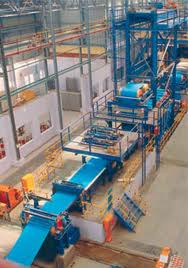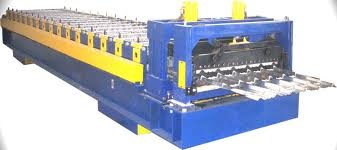Mastering Roof Inspections: Metal Roofs, Part 4
by Kenton Shepard and Nick Gromicko, CMI®
The purpose of the series “Mastering Roof Inspections” is to teach home inspectors, as well as insurance and roofing professionals, how to recognize proper and improper conditions while inspecting steep-slope, residential roofs. This series covers roof framing, roofing materials, the attic, and the conditions that affect the roofing materials and components, including wind and hail.
Steel

This roof is covered in corrugated steel, which is usually used for commercial and industrial siding. It has no protective coating at all and was left to corrode naturally. In the dry climate of many Western states in the U.S., this roofing can last 100 years or more.

Corrosion prevention in steel panels is accomplished by applying different kinds of coatings to the base metal, which is typically steel.

The manufacturing process starts with a large coil that unrolls, allowing a long, steel strip to travel along a series of rollers through various apparatus that clean it, treat it, and coat it. The two basic types of coatings are barrier coatings and galvanized coatings.
Galvanized Coating

Galvanized steel is one of the most common metal roofing products, and consists of a steel base covered with a protective coat of zinc or aluminum. The protective coating is sacrificial, since zinc and aluminum are less noble than steel.
The coating protects the steel at scratches and cut edges, and also provides barrier protection, meaning that the coating helps keep moisture from reaching the steel base.
With a few exceptions, all galvanized steel systems are coated with a base coat of paint of some sort.
Metal coatings are applied by passing the steel strip through a bath of molten metal. The degree to which the metal coating protects the steel and extends the life of the metal roofing depends on the thickness of the galvanized coating.
Because it’s vulnerable to corrosion, galvanized steel is not a good choice for coastal areas or areas with elevated levels of corrosive air pollution.
Advantages of Galvanized Steel
- It's less expensive than most other metals.
- It's high-strength.
- Paint bonds to it well.
- It’s available in a wide variety of styles.
Disadvantages of Galvanized Steel
- It may have a shorter lifespan than other metals, especially if it’s not installed properly.
- It may be more difficult to install properly because it has to be sheared instead of saw-cut.
Galvalume®

Tension-Bend Staining

Over time, microscopic cracks can develop in these areas to expose the steel core to the elements, allowing corrosion to begin. Eventually, this corrosion will expand beneath the metal coating.
- It’s corrosion-resistant.
- It’s strong.
- It’s relatively inexpensive.
- It’s available in only a limited number of styles due to tension-bend staining.
Other Metals
**************************************************
Learn how to master a roof inspection from beginning to end by reading the entire InterNACHI series: Mastering Roof Inspections.
Take InterNACHI’s free, online Roofing Inspection Course
Mastering Roof Inspections
Roofing Underlayment Types
Inspecting Underlayment on Roofs
Fall-Arrest Systems
Roofing (consumer-targeted)
More inspection articles like this

